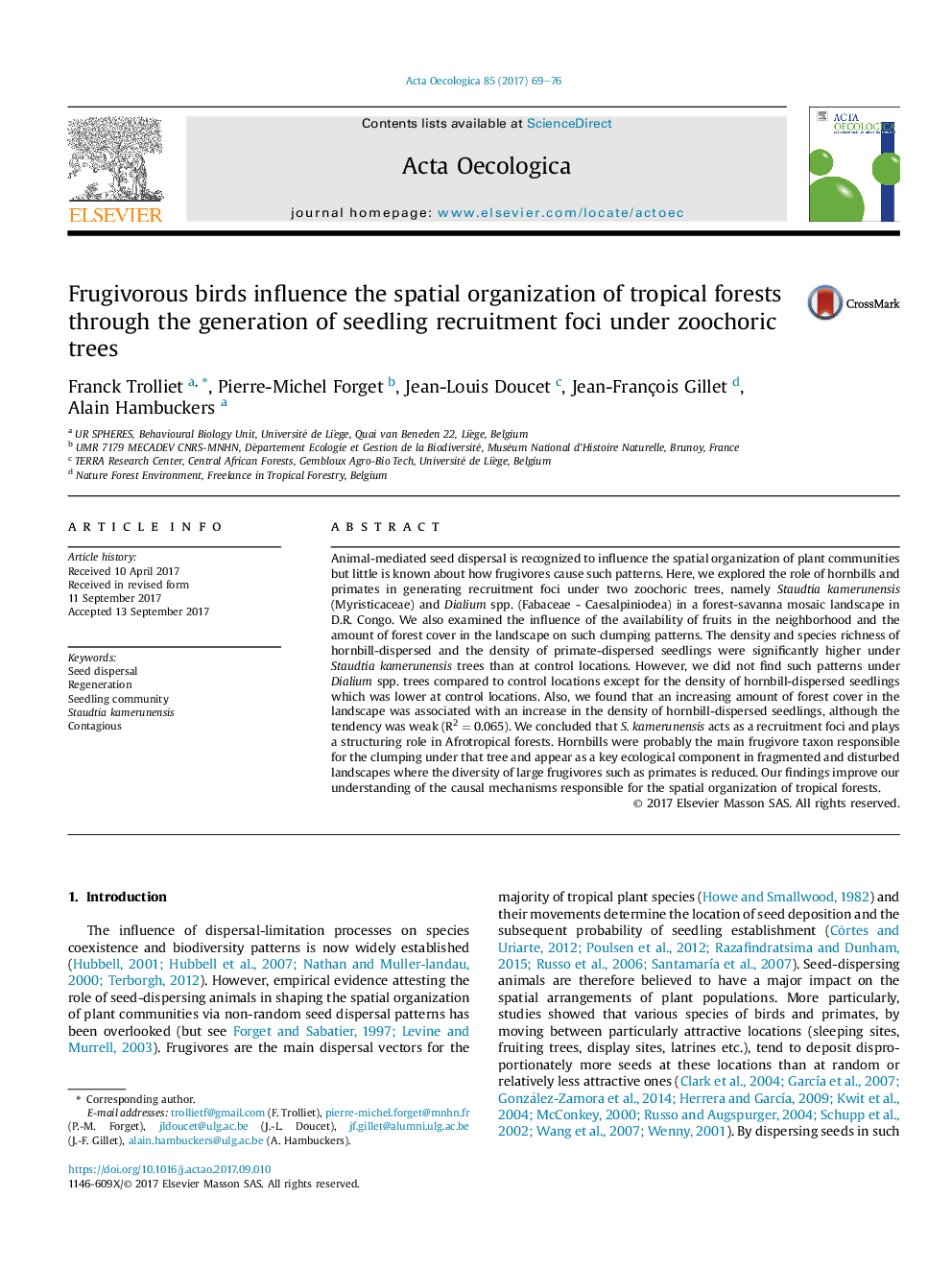| کد مقاله | کد نشریه | سال انتشار | مقاله انگلیسی | نسخه تمام متن |
|---|---|---|---|---|
| 5742450 | 1617687 | 2017 | 8 صفحه PDF | دانلود رایگان |
- We explored the role of primates and hornbills in generating clumpings of seedling recruitment.
- The density and richness of seedlings were relatively high under Staudtia kamerunensis trees.
- Hornbills were probably the main frugivore taxon responsible for such recruitment foci.
- The amount of forest cover positively influenced the density of hornbill-dispersed seedlings.
Animal-mediated seed dispersal is recognized to influence the spatial organization of plant communities but little is known about how frugivores cause such patterns. Here, we explored the role of hornbills and primates in generating recruitment foci under two zoochoric trees, namely Staudtia kamerunensis (Myristicaceae) and Dialium spp. (Fabaceae - Caesalpiniodea) in a forest-savanna mosaic landscape in D.R. Congo. We also examined the influence of the availability of fruits in the neighborhood and the amount of forest cover in the landscape on such clumping patterns. The density and species richness of hornbill-dispersed and the density of primate-dispersed seedlings were significantly higher under Staudtia kamerunensis trees than at control locations. However, we did not find such patterns under Dialium spp. trees compared to control locations except for the density of hornbill-dispersed seedlings which was lower at control locations. Also, we found that an increasing amount of forest cover in the landscape was associated with an increase in the density of hornbill-dispersed seedlings, although the tendency was weak (R2 = 0.065). We concluded that S. kamerunensis acts as a recruitment foci and plays a structuring role in Afrotropical forests. Hornbills were probably the main frugivore taxon responsible for the clumping under that tree and appear as a key ecological component in fragmented and disturbed landscapes where the diversity of large frugivores such as primates is reduced. Our findings improve our understanding of the causal mechanisms responsible for the spatial organization of tropical forests.
Journal: Acta Oecologica - Volume 85, November 2017, Pages 69-76
